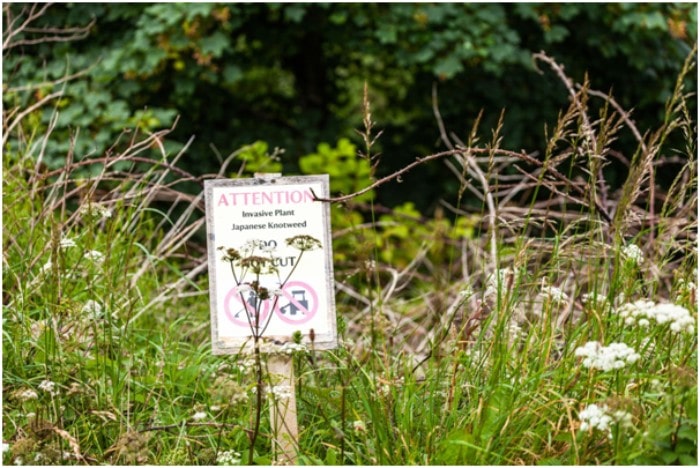
Thanks to its notorious reputation, you might already know that Japanese knotweed is something you should be keeping an eye out for. Whether you’re a keen gardener or if you’re scouting locations for a new home or commercial premises, recognising the invasive species is incredibly useful when it comes to preventing damage to your premises. Understanding how Japanese knotweed could affect your property will help you find a solution to weed growth as quickly and cost-effectively as possible.
What does Japanese knotweed look like?
From a distance, Japanese knotweed can look similar to bamboo, with tall, tough bamboo-like stems and spear-shaped green leaves. In early summer, the plant can also be recognised by clusters of small white flowers. Thanks to just how quickly knotweed spreads, it can usually be found in bigger clusters, and so it’s unusual to spot a singular plant.
If you think you’ve spotted Japanese knotweed growing on your premises, you’re advised to seek professional guidance as soon as possible, to prevent the plant from spreading further and potentially creating irreparable damage. Expert consultancies like Ebsford Environmental can advise you on the best course of action to remove Japanese knotweed permanently, using a wide range of industry-leading solutions that work for you, your property and your timeline.
Where can you find Japanese knotweed?
The plant first arrived in England in the 1800s as a gift for an ornamental garden – at this point, the destructive nature of Japanese knotweed was relatively unknown. Over time, it spread to more and more gardens and eventually areas of natural wildlife across the UK. We now know that one of the biggest issues the invasive species creates is how much it thrives during disruption. This is why you can often spot knotweed growing by roadsides or river verges. In areas such as these, that naturally undergo more disruption, Japanese knotweed’s fragments spread more quickly, causing it to grow faster and further than native plants.
Why is Japanese knotweed so dangerous?
Japanese knotweed’s famed reputation is granted mainly because of its ability to push through tarmac, concrete and even drains. This creates multiple problems for homeowners and commercial building owners. The plant’s roots can grow by up to a metre each month, meaning that if you spot it on your premises, you need to look into removal options as soon as possible. As well as breaking through manmade materials, the strength of knotweed’s roots makes for a hostile growing condition for any other natural flora or fauna in the area. Thriving in derelict and wild areas, Japanese knotweed can quickly take over the natural environment, preventing other plants from growing, and impacting on waterways and natural habitats.
Because of the hugely destructive impact the roots can have on both natural and manmade environments, knotweed is treated as controlled plant waste by law. It’s now illegal to cause the plant to grow in the wild, so if you think you’ve got an infestation on your hands, it’s important you go about removing it properly.
How can you remove Japanese knotweed?
Unfortunately, the incredibly fast growth of Japanese knotweed means it’s almost impossible to remove in one go. The plant dies and grows through the seasons, so needs to be treated seasonally over a yearly cycle to ensure it can be eradicated for good. However, expert help means there are now a number of ways to remove the invasive species, offering you some flexibility when it comes to clearing your premises of the root. Depending on the area of your premises in which the Japanese knotweed is growing, you can use chemicals to kill the roots and rhizomes or excavate the entire area to ensure no soil is contaminated with harmful fragments.
